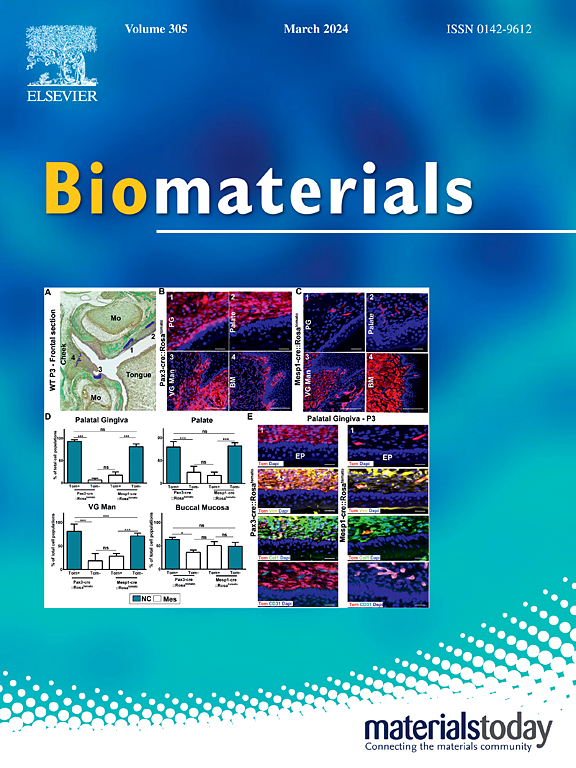Precision delivery of pretreated macrophage-membrane-coated Pt nanoclusters for improving Alzheimer's disease-like cognitive dysfunction induced by Porphyromonas gingivalis
IF 12.8
1区 医学
Q1 ENGINEERING, BIOMEDICAL
引用次数: 0
Abstract
Oral infection with Porphyromonas gingivalis (P. gingivalis), a kind of pathogenic bacteria causing periodontitis, can increase the risk of Alzheimer's disease (AD) and cause cognitive decline. Therefore, precise intracerebral antimicrobial therapy to reduce the load of P. gingivalis in brain may serve as a potential therapeutic approach to improve AD-like cognitive impairment. A kind of nano-delivery system precisely targets bacteria in the brain through coating P. gingivalis stimulated macrophage membrane onto the surface of platinum nanoclusters (Pg-M-PtNCs). Approximate 50 nm spherical Pg-M-PtNCs demonstrate good biocompatibility and the pretreated macrophage membranes can inhibit macrophages phagocytosis and increase the adherence to bacteria. Pg-M-PtNCs can significantly inhibit the growth of P.gingivalis in vitro, and are effectively delivered and remain at the infection site in the mice brain to reduce the bacterial load and neuronal damage, and then improve the AD-like cognitive dysfunction in the chronic periodontitis mice. Platinum nanoclusters coated with P. gingivalis pretreated macrophage membrane play an important role in targeting bacteria in the brain, and effectively improve AD-like cognitive function disorder caused by P. gingivalis infection in the brain.

求助全文
约1分钟内获得全文
求助全文
来源期刊

Biomaterials
工程技术-材料科学:生物材料
CiteScore
26.00
自引率
2.90%
发文量
565
审稿时长
46 days
期刊介绍:
Biomaterials is an international journal covering the science and clinical application of biomaterials. A biomaterial is now defined as a substance that has been engineered to take a form which, alone or as part of a complex system, is used to direct, by control of interactions with components of living systems, the course of any therapeutic or diagnostic procedure. It is the aim of the journal to provide a peer-reviewed forum for the publication of original papers and authoritative review and opinion papers dealing with the most important issues facing the use of biomaterials in clinical practice. The scope of the journal covers the wide range of physical, biological and chemical sciences that underpin the design of biomaterials and the clinical disciplines in which they are used. These sciences include polymer synthesis and characterization, drug and gene vector design, the biology of the host response, immunology and toxicology and self assembly at the nanoscale. Clinical applications include the therapies of medical technology and regenerative medicine in all clinical disciplines, and diagnostic systems that reply on innovative contrast and sensing agents. The journal is relevant to areas such as cancer diagnosis and therapy, implantable devices, drug delivery systems, gene vectors, bionanotechnology and tissue engineering.
 求助内容:
求助内容: 应助结果提醒方式:
应助结果提醒方式:


